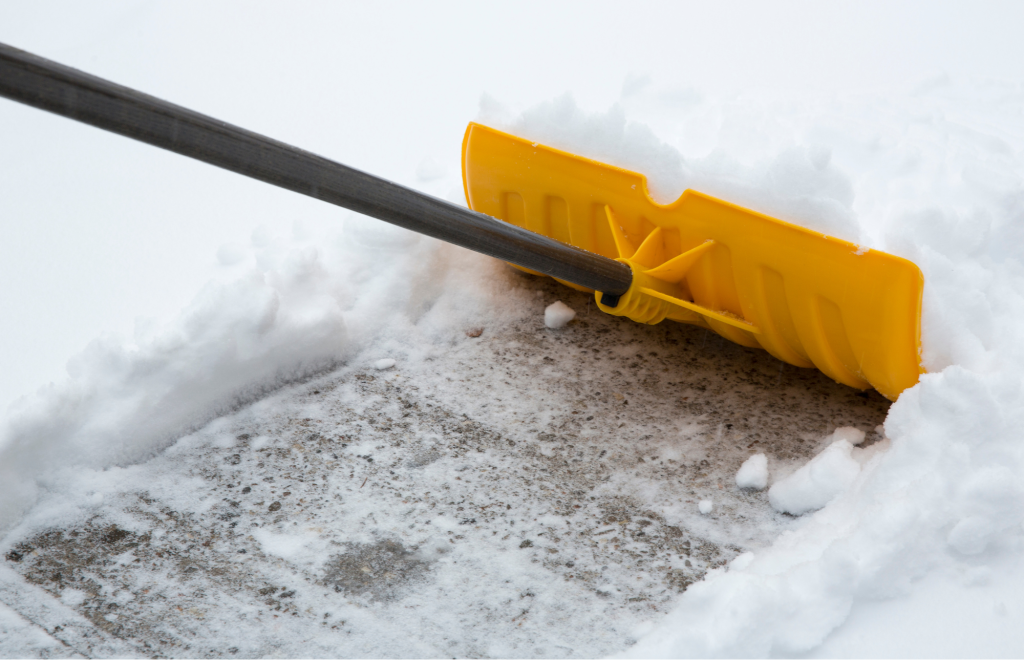New concrete may have been installed in front of your home as part of city improvements. When construction has been substantially completed, it’s important to know how to care for these improvements during their first winter. Proper maintenance will help preserve the surface and prevent damage, especially while the concrete is still curing.
Understanding New Concrete
When the concrete is first poured, it can take up to one year to fully cure and dry out. During this time, concrete is more susceptible to freeze-thaw cycles, which can lead to cracking and surface damage. This is why it is especially important to take extra care of your new concrete in its first winter season.
Why Avoid Chemical De-Icers?
Chemical de-icers can damage new concrete, especially those containing magnesium chloride or calcium chloride. Concrete driveways are constructed using a mixture of cement, water, sand, and gravel, which is inherently porous. When water from melted ice infiltrates these pores and subsequently freezes, it expands, causing internal pressure. Deicing chemicals exacerbate this process by increasing the number of freeze-thaw cycles the concrete undergoes, amplifying the potential for damage. Chemical salts can also harm surrounding vegetation, corrode metal, and contaminate local water sources.
Snow Removal Tips for Protecting New Concrete
 Shovel Regularly
Shovel Regularly
- Remove snow promptly after it falls to prevent it from compacting or turning into ice. Use a plastic or rubber-edged shovel to avoid scratching the surface of your new concrete. Snow blowers can help speed up the process and take some strain off your back.
- Use Sand or Chicken Grit (not de-icers)
- Instead of chemical de-icers, sprinkle sand or chicken grit on top of any icy areas for added traction after clearing off the snow with a shovel or snowblower. Once melted you can sweep up and re-use again. Keep materials inside a heated building so they do not freeze.
- Avoid Metal Tools
- When dealing with ice, avoid using sharp metal tools such as picks or crowbars that can gouge or crack the concrete. Instead, opt for plastic or wooden tools.
By following these tips, you’ll help preserve the integrity and appearance of your new concrete while also ensuring safety for pedestrians and vehicles. Remember, the first year is critical in maintaining the quality of your newly poured concrete.